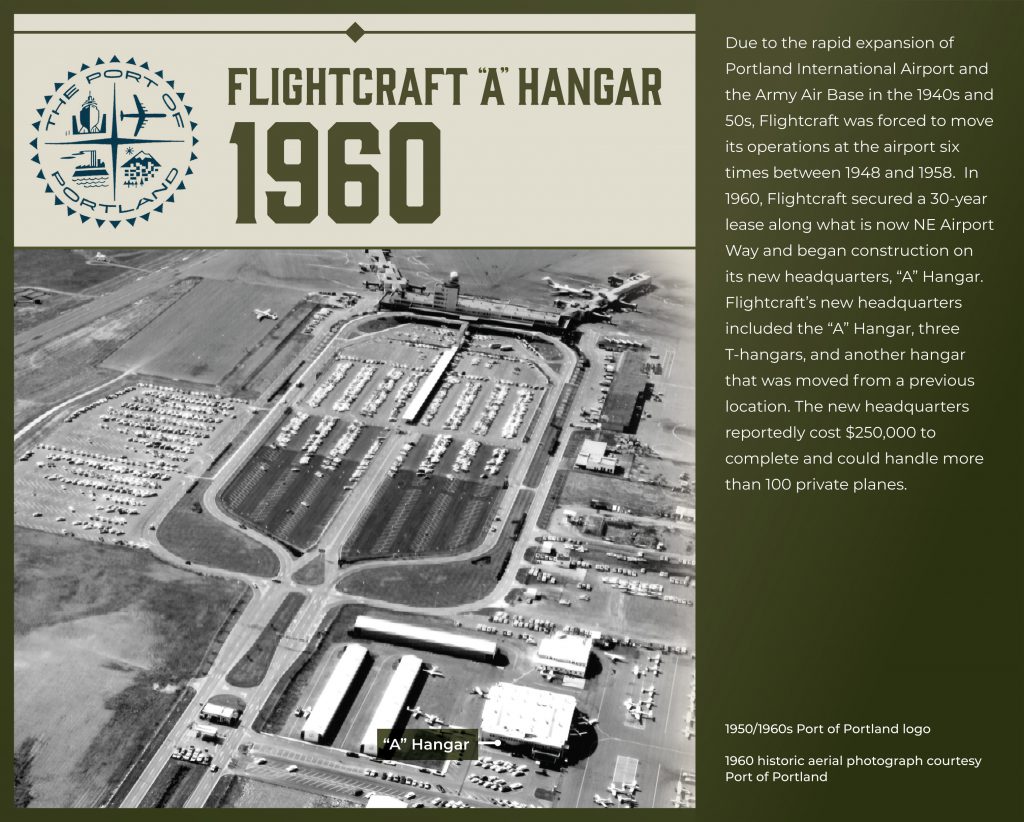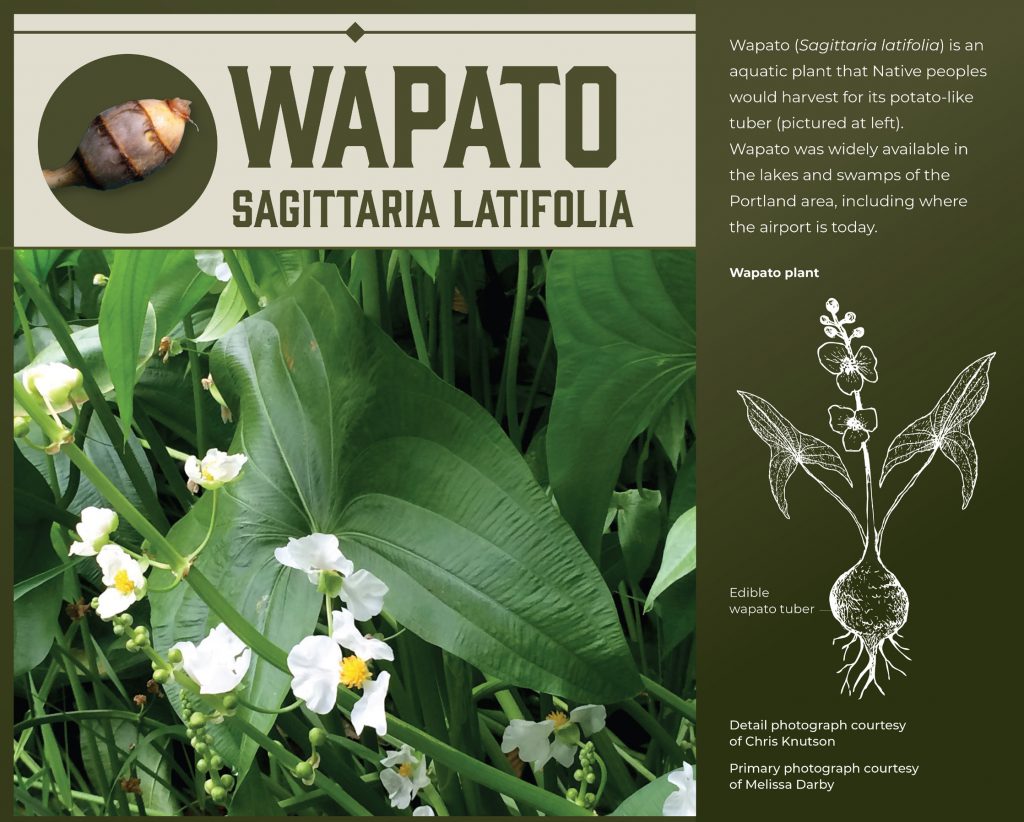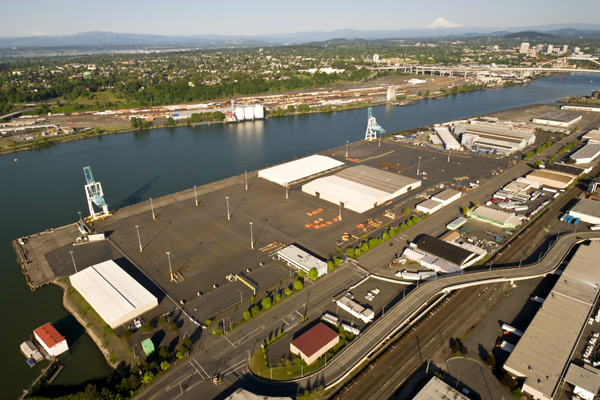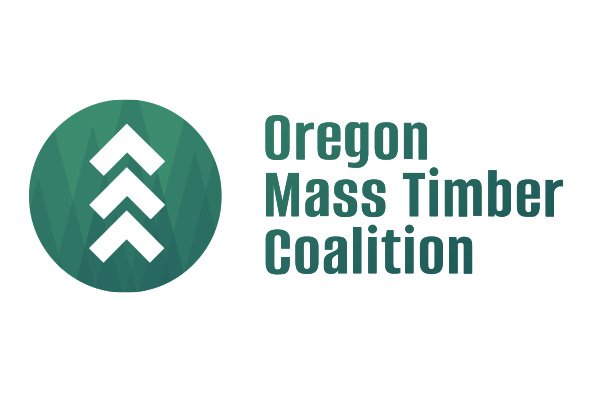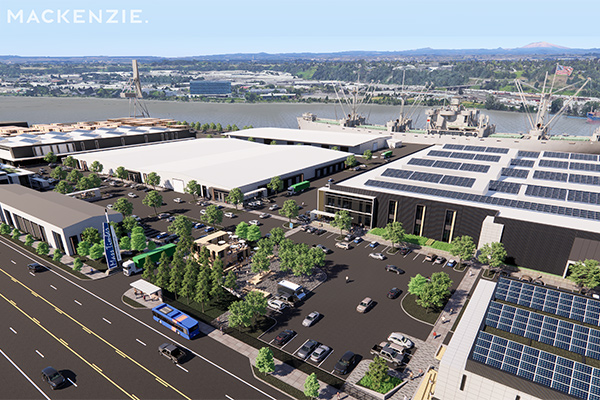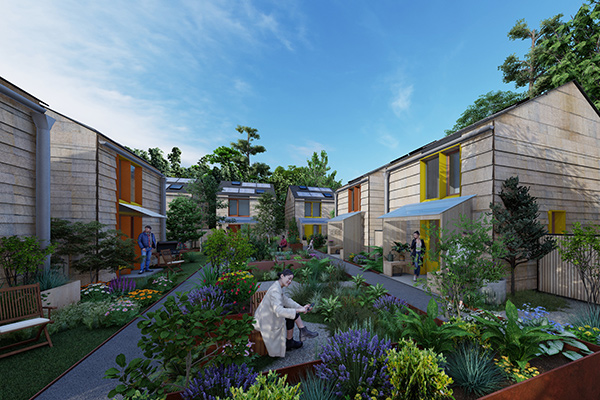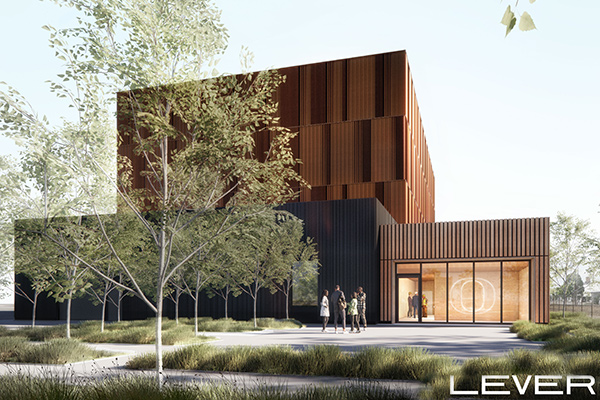“Land of Ports” Historical Display Unveiled in PDX’s South Tunnel
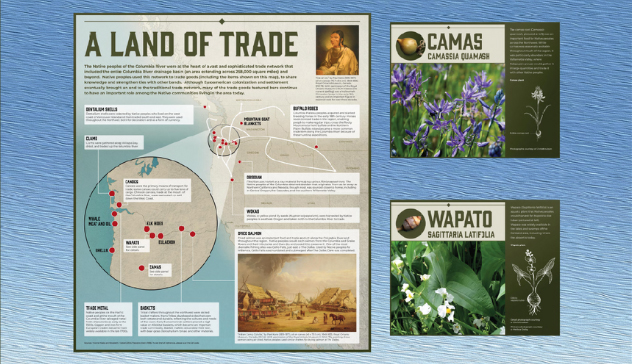
Anyone walking through the South Tunnel at PDX (the tunnel connecting the new Rental Car Center to the airport terminal) will see the newest historic display created by the Port, called “Land of Ports.” The display includes information about two historic hangars that were demolished at PDX, but it’s different than other historic displays you may have seen around town. That’s because in addition to talking about the historic buildings, the Port also took this opportunity to highlight the history and culture of the Native people who have lived on this land since time immemorial.
When public projects like airport expansions or roadway projects have the potential to impact historic properties (more than 50 years old), federal and state laws require the public agency to consult with the State Historic Preservation Office (SHPO) before beginning the project to ensure compliance with cultural resources regulations.
Two historic properties at PDX – in this case, historic airplane hangars – were demolished as the result of separate airport projects: Hangar 701, a former military hangar dating back to WWII, and Flightcraft’s “A” Hangar, built in 1960. Hangar 701 was in use from 1941 until the late 90s, when it stood vacant due to asbestos issues until its demolition in 2007 for airport redevelopment. Flightcraft, a Pacific Northwest-based private aviation business, operated the “A” Hangar for 60 years before it was demolished in 2020 as part of the North Remain Overnight Parking project.
Consultation with SHPO prior to the initiation of the projects determined that each hangar was eligible for listing in the National Register of Historic Places. It was also determined that impacts to both buildings could not be avoided through project design, which meant the Port would be required to offset the loss of the historic properties by preserving each building’s history. That’s where the public displays come in.
Conversations among the Port, SHPO, the Federal Aviation Administration (FAA) and Tribes shaped how we told the story of the hangars. The Port is committed to respecting the history of the indigenous people who were forcibly dispossessed and removed from their homes. So, when we were asked during consultation to broaden the scope of the display to include pre-settlement history of PDX, we understood that a more complete story of the hangars’ significance must include historical context that preserves the history and culture of the Chinook, and other Native people who have lived in this area since time immemorial. In addition to shedding light on the different eras of PDX, the Land of Ports public display also tells the story of the vast and sophisticated trade network that this region was and continues to be part of.
After several years of thoughtful collaboration among Port staff, Tribal partners and Dudek, a local cultural resources consultant, the new display can now be viewed in the South Tunnel at PDX. A lot of work went into developing this display, and everyone at the Port who played a part in making it happen – including partners in Environmental Conservation, Community Engagement, Tribal Relations and the PDX Art Program – is incredibly proud of the outcome: A beautiful display that shares the rich history of this region.
For more information about the two historic hangars and other historic sites at Port of Portland locations, visit https://www.portofportland.com/HistoricalSites.
